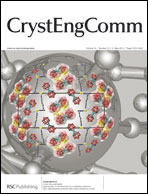Monodisperse ZnSn(OH)6 (ZHS) microcrystallites (MCs) with two morphologies have been prepared through a facile preparation method without complicated steps, or advanced experimental conditions or equipments. The morphology and compositional characteristics of the 3D hierarchitectures (HAs) of ZHS MCs were investigated by various techniques such as XRD, FESEM, TEM, UV-vis spectra, BET, XPS and EPR. In the reaction system the morphology evolution from cube to sphere was controlled by adding a different concentration of NH4OH. Meanwhile, the formation mechanisms of the two ZHS MCs were studied via a series of time-dependent experiments. Interesting, ZHS MCs were self-assembled from irregular-shaped nanoparticles (5–10 nm). The XPS and EPR tests demonstrated oxygen vacancy defects existed in the ZHS MCs. The gas sensors based on ZHS presented a good sensor performance towards HCHO. However, the gas sensors based on of ZHS spherical MCs exhibited a higher response, shorter recovery time and good reproducibility towards HCHO than those of ZHS cubic MCs. More importantly, the best gas sensing properties were found coming from the ∼600 nm spherical ZHS MCs owing to more oxygen vacancy defects, lower band gap energy, and larger active surface area.

You have access to this article
 Please wait while we load your content...
Something went wrong. Try again?
Please wait while we load your content...
Something went wrong. Try again?


 Please wait while we load your content...
Please wait while we load your content...